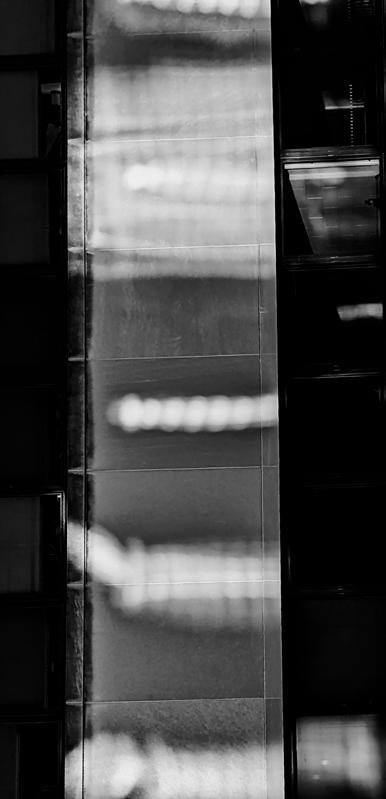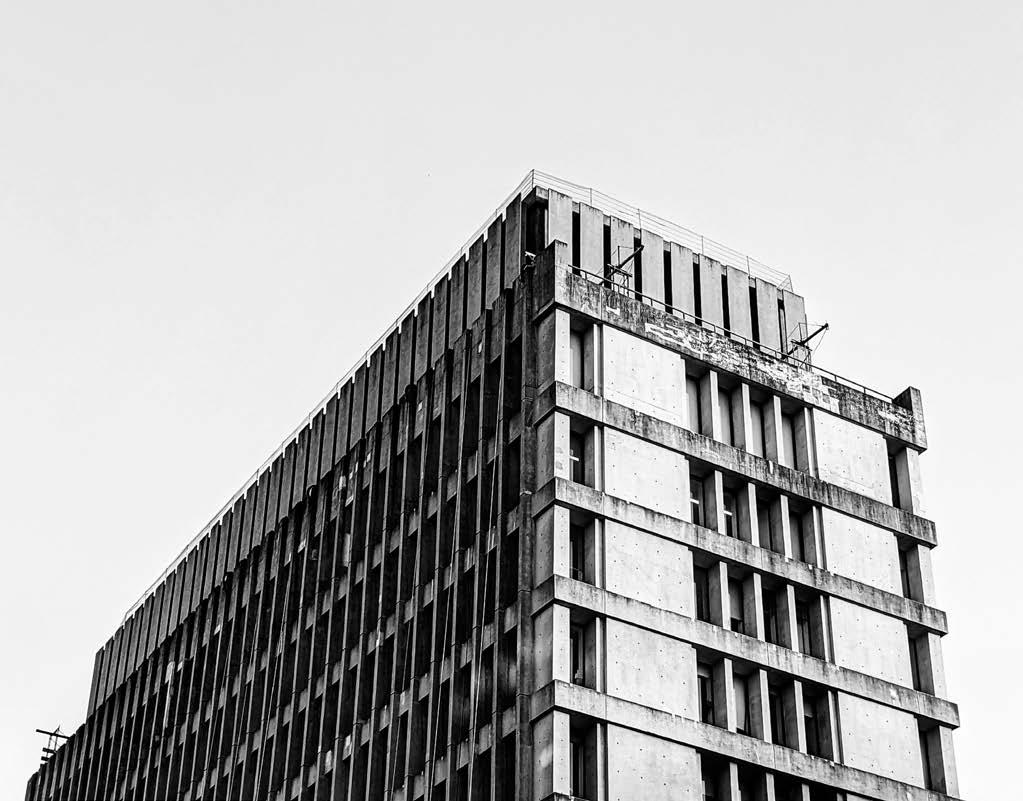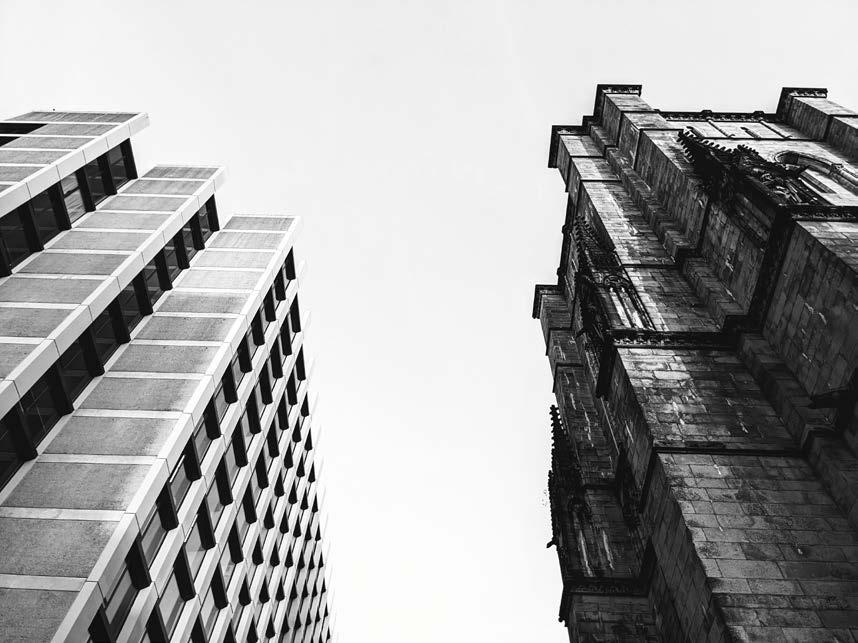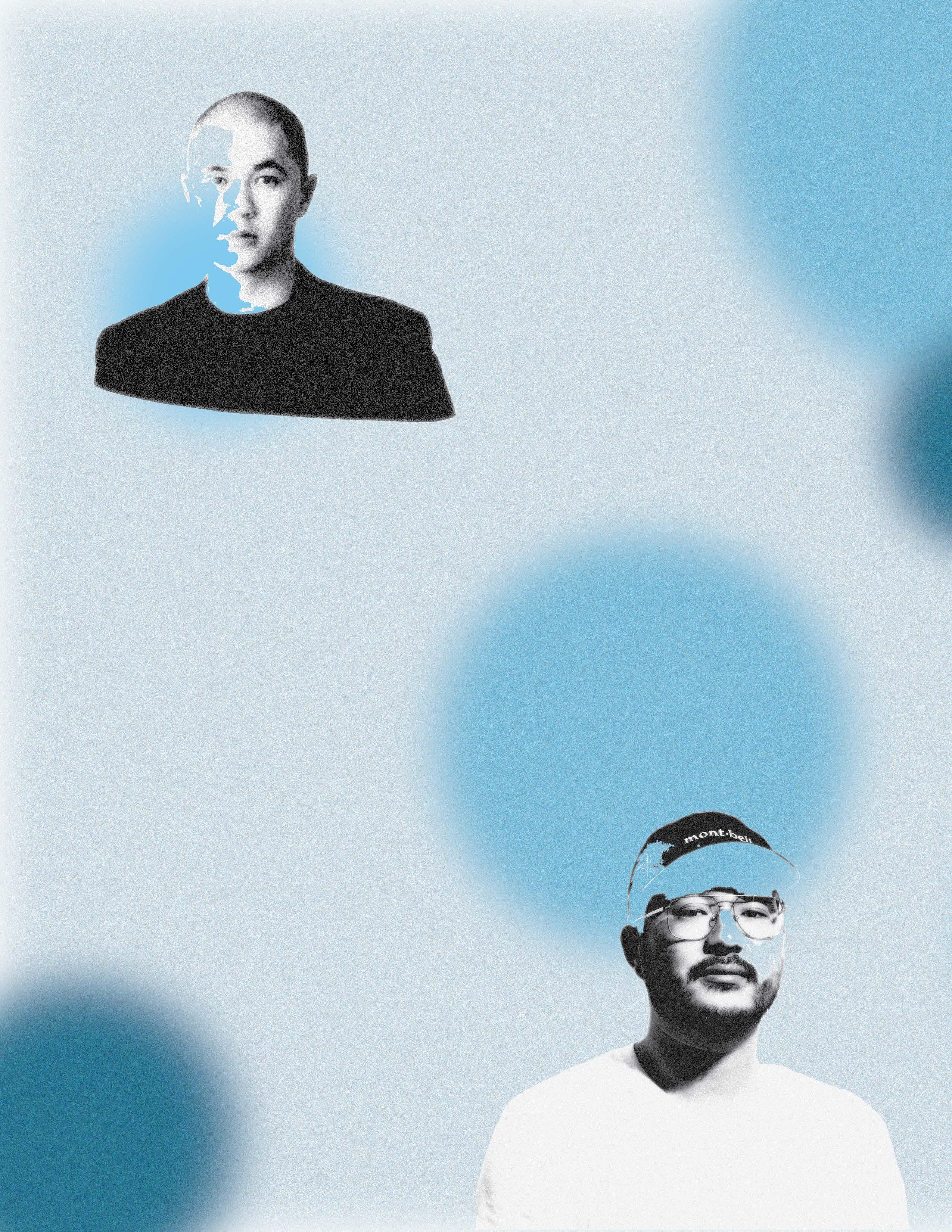
15 minute read
Conversations in Architecture
Founder of NYC based practice FOOD New York, DongPing Wong is one of the most exciting and innovative voices in architecture. With collaborators spanning from Les Benjamins, to Virgil Abloh, to Kanye West, to HYPEBEAST, Wong’s practice is on the frontier of multi-disciplinary design. I caught up with Dong-Ping over Dim Sum at House of Joy, just blocks from FOOD’s China Town office. This is an excerpt from a full interview available on the TKTNK Youtube.
Quinn Hughes: I think, from the student perspective, that’s one of the hardest things to learn. That the voice of the architect, is the balance between letting the site, and the client, and the program speak for itself, and letting your voice, you’re kind of architectural imposition on the space (speak), in a certain way. That’s that balance in a lot of instances, which I think is super cool to hear you speak to, that relationship. It’s not one approach every time, it has to happen organically.
Advertisement
Dong-Ping Wong: Don’t get me wrong, I fight with our clients all the time! But we’re always pushing back, they’re always pushing us back. There’s always stuff that we want to, do that physically, environmentally, cost wise, we can’t do. And that is a good lesson to learn. It’s a good ego check. It’s a good real world check. I’m honored that you even pick up on that through line through the work because, we’ve gotten to the point where I realized it but it’s never conscious in terms going into it. It’s just kind of like, you just want to do it. At least I just want to do it. I keep thinking, did an interview a long time ago, and I was like, the ideal feeling I try to achieve in the work doesn’t always happen. I grew up in San Diego and I grew up surfing. And when you’re surfing, there’s always moments. I mean, the majority of the time you’re just sitting there waiting for a wave and there’s this calmness, oftentimes where there’s no wave coming into us. It’s like flat horizon, especially when it’s like kind of overcast and it’s the grey/silver sky kind of blends and reflects off the water and blends in. And you’re sitting in this weird serene, void. But also, you’re like floating in water. And it’s really quiet. You have no media, you have no phone. But that feeling of just kind of being, in nature was always like, if I can find a way to always hit that moment where you snap into this weird zen moment, that’s always what we try to do. But I think that kind of being outdoors was always my favorite. I’m always happiest, usually, outdoors. Initially, the challenge was like, how do you do interior spaces and bring some outdoors in? And the Off-White store was one good example of that. And I think once we had success with that, we’re like, “Oh shit, we can do this, there’s methods to do this. It’s not an impossible Ideal.” Well, honestly, it’s as dumb as like, we just design places that I think we’d want to visit.
part of building an environment. Of course that is. It seems like often, GSAPP or the GSD aren’t writing papers about that, aren’t having labs dedicated to that. But of course, that’s such an intrinsic element. Could you talk about where like, Mahjong specifically but also that theme in the work of thinking about community comes from and what that process is like?
Dong-Ping Wong
QH: Yeah! And I think it seems simple, but it’s a level of mindfulness. Because, it’s about physical environment and it’s also about communal environment in a certain way, it’s a way of thinking about architecture, not isolated, but as responsible to nature, community, and physical ecosystem. I think something that seemed like a super cool throughline was, Plus-Pool a few years ago, and currently the work that’s being done, but also Mahjong. Which is of course, that’s architecture in a certain way. Of course, inviting people in to do things and make things that’s already existing is a
DPW: I mean, it’s interesting that you pulled Plus Pool and Mahjong together, because there’s a very clear line between the two, just from like an initiative point of view. Plus Pool was one of the first one of the first projects I thought up when I was like, “what’s the kind of work I want to do?” And instead of just doing competitions, let me just try to invent something and see what happens to it. Maybe it picks up a few eyeballs, and that’s it. But the idea was, “Can we like invent a project?” But that was very much, “What is the kind of work I want to do?” It deals with the natural environment, it’s outdoors, it’s for a bunch of people. That was also much more heroic. It’s a glittering piece of architecture in that “capital A” kind of way. So, years later, when we’re still trying to push Plus Pool, its a decade plus old, it was like, alright, I want to keep doing initiative stuff, we want to keep doing initiative stuff, we don’t want to do another decade’s worth of project that doesn’t get built yet, can we do something quick? And also, I think the big advantage is kind of “put your money where your mouth is”. We talk about community a lot, can we actually make a space people want to come to? It may look cool, but if nobody wants to come hang out, what’s the fucking point? So it started actually with Food Radio, and that was our first attempt. And that was after like, you know, we’re in Chinatown now, if we really believe that we want to learn how to be part of Chinatown, just put your shit out there. It may not work, it may work. What was interesting, it both worked and didn’t work in a way. It worked and it was great. The interviews were amazing, I thought, I learned a lot, people came by the space, it was super fun. It didn’t work, I would say, in the sense that the community of people that came by, were already our community. Like our friends, friends of friends, colleagues, people in the design world, architecture world. And we only had a handful of people that came by from the neighborhood. But it was like, look, we spent two months on it, we very quickly learned from real world experiences, you can’t just open a space and expect people to come by. You have to actually be a part of the neighborhood. You know? One of the things that brought people by was, as dumb as it was, Bella, who’s the director of the office, just walked across the local public library, and was like, “Hey, we’re doing a taco building workshop, if any of the kids want to come by.” And they came by. It was that simple. Well, like that’s not an architectural problem in the way that you learn how to deal with it. So that was really important for us to learn. Mahjong club, very similarly is like, as it leads into a more traditional architecture, my goal is maybe we can actually build out a community center project physically at some point, but I want to make sure also, if we ever get hired to do that, or can initiate that, we already are part of the community that it is for in some way. Or we’ve worked with them in some way, and so let’s start with just these events, and slowly build those events up. Even now it’s still majority friends and family. What’s nice now is, we’re starting to involve people that are a little bit out of our circle. Same age, same interest, but people we didn’t know before. We’re still not getting like-, my dream was, I want to get like the old dudes playing mahjong in the basement that I walked by, and they’re like, “I want to come to this.” We may never get there, and that’s all good. But I know how far we have to go with that. But to your point, I also believe it’s fully architecture. It is the architecture part that I think it’s very easy to ignore as a designer. How do real people actually occupy this thing? How do you make sure they have a good time? Sometimes it’s like, well, just put on good music. It could be that dumb. It doesn’t have to be more complicated than that. Serve them some good food. That’s all you really need. You don’t have to have some crazy form. There’s no crazy shit. It’s good food, good music, get some people around, that’s it.
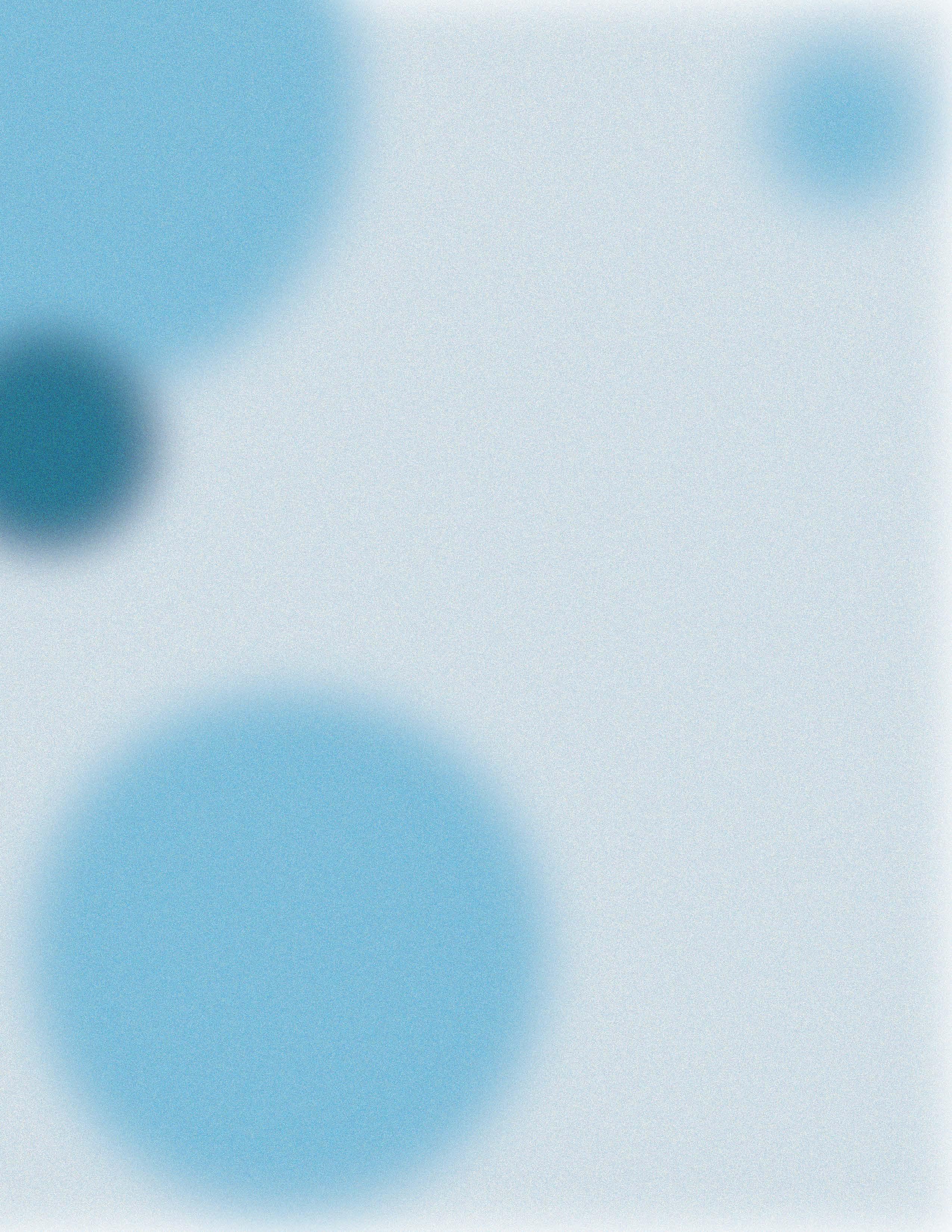
QH:It’s that willingness to be open. Once you’re there, it’s like, “Oh, of course”, in a certain way. I did debate in high school. I am working with (my high school’s team) now that my brother is there. And it’s like, oh, “how do we get these young 15-yearold kids to want to like come to debate? Oh, of course, you just bring pizza, you bring them Doritos.” (They’re) like, “Okay, I guess we’ll come to argue with each other.” I think that’s super cool to think in that way and be open.
DPW: Well also think, and I’m curious if you’re starting to sense this because you’re only a couple years in. But it’s like, the deeper you get into architecture education, at least at the high end academic, Ivy League, level, I do think the further away you get from just knowing how to talk to normal people. You have this whole other language, you have this whole other way of operating that is very removed from the people that end up using your space. And so luckily, I’ve been out of it for a while. Part of the reason why I was like, let’s learn how to just be neighbors. You know? That simple kind of stuff.
QH: I think it It’s with architecture, it’s super specific, because I think a lot of folks have that one moment, young, where it’s like, “Oh, snap architecture is just a word that I use for the cool stuff that like with my friends, when we’re designing sneakers on the Nike ID website that we’re never going to buy, or when we’re setting up our own rules for basketball, when we’re just hoping, because we only have three people and a fourth person comes.” Architecture is a way of describing that. It totally gets abstracted from that essence in a certain way. Hearing you talk and seeing the projects, when I was doing some research for the interview, I think what made you as a person super interesting is-, it’s one thing to be an architect, that’s already a risk, in a certain sense. You don’t necessarily know what the processes are to make money, and be sustainable, if you work for anyone. Then, there’s another level when you work for yourself. And you’re now responsible for your own money, and your own finances, and your own projects. But then to do that, and to do something like Plus Pool, where, when you were describing it, the traditional model of architecture, of being commissioned by a client, was flipped on its head, that seems super courageous to. To be like “we have to we what we want to see, we don’t know if someone’s gonna buy it, but we believe in it, and we work backwards.” Similarly, in a certain way, to mahjong or working with a young streetwear designer who’s just an artistic director for Kanye West with Virgil. Can you speak a little bit about-, of course that’s fun and super exciting, but it has to be a little bit scary, at least initially, when you just have the ideas. Can you talk about what that courage is like to keep going and moving forward, when it’s difficult in that process?
DPW: I will say weirdly, it gets it gets scarier the more established we get, in a way that is more psychological. It’s kind of like, the more you have to lose, the less risk averse you become. But generally, I feel I’m super privileged that had a very classical architectural training and education, that I worked at very classical architecture offices for a number of years before starting my own thing. And so, for the longest time, was like, “I know what that world is, and if I need to get a job in that world, I think I can get a job.” When I also know that I’ve got 40 years of this, or whatever, to look forward to, or not look forward to, however you want to put it. And especially with Plus Pool at that time, it was actually right after the 2008 recession. There wasn’t a lot of shit going on anyways. It was kind of like I literally have nothing to lose. I’m freelancing to pay some bills, I’m getting by. I’m not making a ton of money no matter what I do. I’m not getting the kind of work, nobody’s calling me for work, I guess, no matter what I do. And so at that point, Plus Pool actaully didn’t seem like a risk at all. If anything, it was like, a no brainer. Let’s just try this. And also, I mean, we put in a lot of work, with Archie and Jeff from PLAYLAB. We put a lot of work. But also, we had time to do it, It seems cool, it’s getting our brains out of just trying to survive from a business point of view post (recession), and we had no real expectations of where we’re going. So with Mahjong, the risk is not so much from a business point of view. It’s like, I don’t want to, misstep and create something that’s actually detrimental in some way to the neighborhood. Or harmful in some way. But at the same time, I won’t know what that is, until get to that limit. I can either do nothing, or, one of the reasons we put so much out there is like, I want to find a way to actually learn from other people that are doing work in the neighborhood. And be like, “this is what we’re about. You can either fuck with it or not, and if you don’t fuck with it, we’ll take that as a lesson and I might switch it up. And it also gives us, frankly, we made it an excuse just to call people up, and be like, “Can I talk to you? And can we do an interview.” I don’t know if it actually feels that risky. As dumb as it is, the only risk is like, okay, we got $10,000 right now, should we save it a little bit, or should we just put something?
I think that philosophy has always been like, if we have money, let’s spend it. Let’s either like, put it to the staff, let’s put it to an event, let’s do anything with that. Money will come and go. We’ll figure it out. It may mean that we’re not the best at building a business, but at the same time, I’m very happy that we’re not hoarding money or something. I think it’s one of those things, I started an office to pay bills obviously but that’s not why I started the office. I started the office mainly to try and figure out what kind of work I wanted to do, and find a way to do that.
Michael Able is co-founder of NYC architecture practice ANY, and Chief Design Officer at Frank Ocean’s jewlery line HOMER. Recenlty winning AIANY’s new practices competition, ANY’s work explores the intersection between architecture, media and culture. In January, Michael and I talked about SMLXL, writing, architectural education, and Lil Uzi. This is an excerpt from a full interview available on the TKTNK Youtube.
Quinn Hughes: I think that’s probably my favorite thing about school, in a particular way, is just finding different people who speak your language. And, think that’s what’s cool about architecture is that it draws from so many different backgrounds. It’s so rewarding to have those dialogues with people who come from different spaces, different thought processes. I’m super interested in a lot of what you spoken about, I’m really interested in the different medium exchanges that you’re referencing. Are there places that you feel like you’ve tried to most to look (at) when you’re when you’re-, not necessarily for inspiration, but when you’re looking at music, art, film, that you find yourself thinking about architecture? Other spaces, or artists or musicians that you find yourself engaging the most. Or is it as you see an array of different things?
Michael Abel: I think it happens subconsciously, you know? I try not to apply it so directly..but I do really think it is important to engage in all these other mediums and disciplines. It’s not to say you have to be an expert in everything but it’s important that you can meet experts, talk to them, work with them, and collaborate. It’s such a simple idea…the more you learn, the better. You just have to find ways to mitigate, translate and provide clarity to all of these ideas. Because the biggest risk is to be like “okay, I know everything about everything…now what?” And then you get this convoluted project. So I’m trying to think about output, which is why Casa Da Musica was an important project for me to see this summer. I do believe that was a physical manifestation of overexposure at a certain time…20 years ago.
QH: I see the word “sponge” often in your writing and stuff like that. I think that’s such a such a useful metaphor, immediately, because it’s drawing from other things to create one kind of unit, in a certain kind of way. Being open to those relationships, being open to those connections as an embrace.
MA: Yeah, I’ve been trying to toy with that idea, with “sponge” and “flipper”. The “sponge” one is kind of self explanatory. And then the “flipper” one is a little less self explanatory, but it came from this derogatory term that conservatives used with liberals to describe a “flip-flop politician”…which is describing a liberal politician to flip-flop on their ideals (or they change their mind). So they were against something five years ago, and then they’re for something five years later, and it’s derogatory because they’re saying it’s just because they want the vote. But if you spin its progress, or learning and things like that.
QH: I got to see the flipper presentation at Cooper Union in November of last year. And it was super cool to see that kind of rhetoric, and then immediately applied to the projects and ideas that y’all are working with now. I think the two of my favorite things were the meme of like, “I’m trying to learn the distinction between, post modernism and modernism.” And it’s like, “The these terms are generated by the Academy.”
I don’t I don’t know the particular language.
MA: “this binary is obsolete as fuck” moments of scale on and around campus
QH: Yeah!
MA: Yeah…I don’t know if we’ve applied it yet. We’re working on it. I don’t know even what we’ve shown you is-, you know… we’re very much a young practice…we are practicing and the scale of the projects don’t necessarily represent these ideas that we’re thinking about. When you give lectures like that at Cooper, you can talk about these kind of disciplinary ideas of where we want to go, and where we think the discipline should go. But then we work on projects that are, you know, maybe only a 2000 square foot building, or house, or restaurant, or something like that. And, I can’t say you can put all of those ideas in that, versus a concert hall in Porto, which is an extremely public project, in the best way possible.
QH: Yeah, I think it’s useful to be able to, like, use language in a particular way to think about design. Because I think the projects kind of exist on their own, but the conceptual framework that’s kind of used to create them develops.
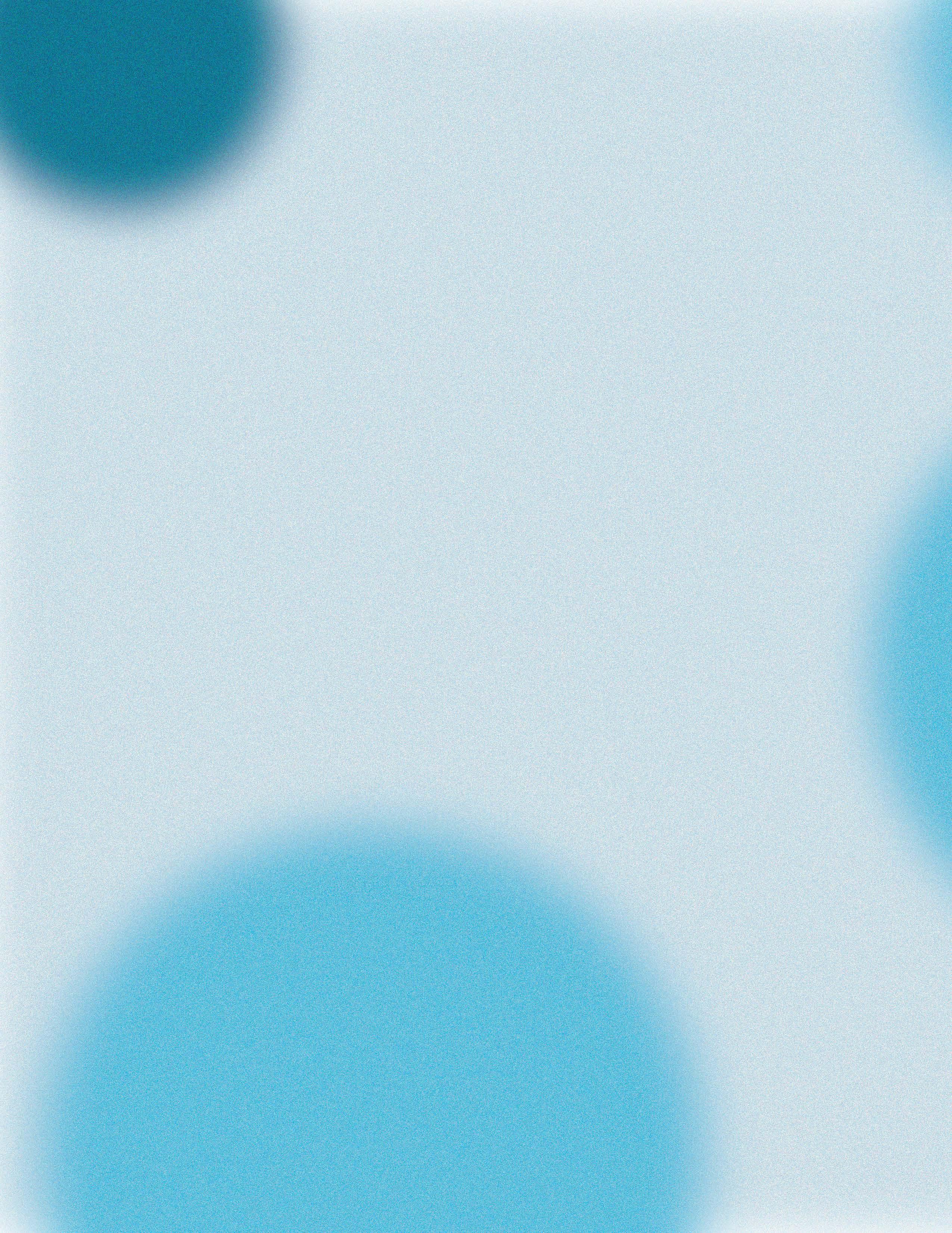
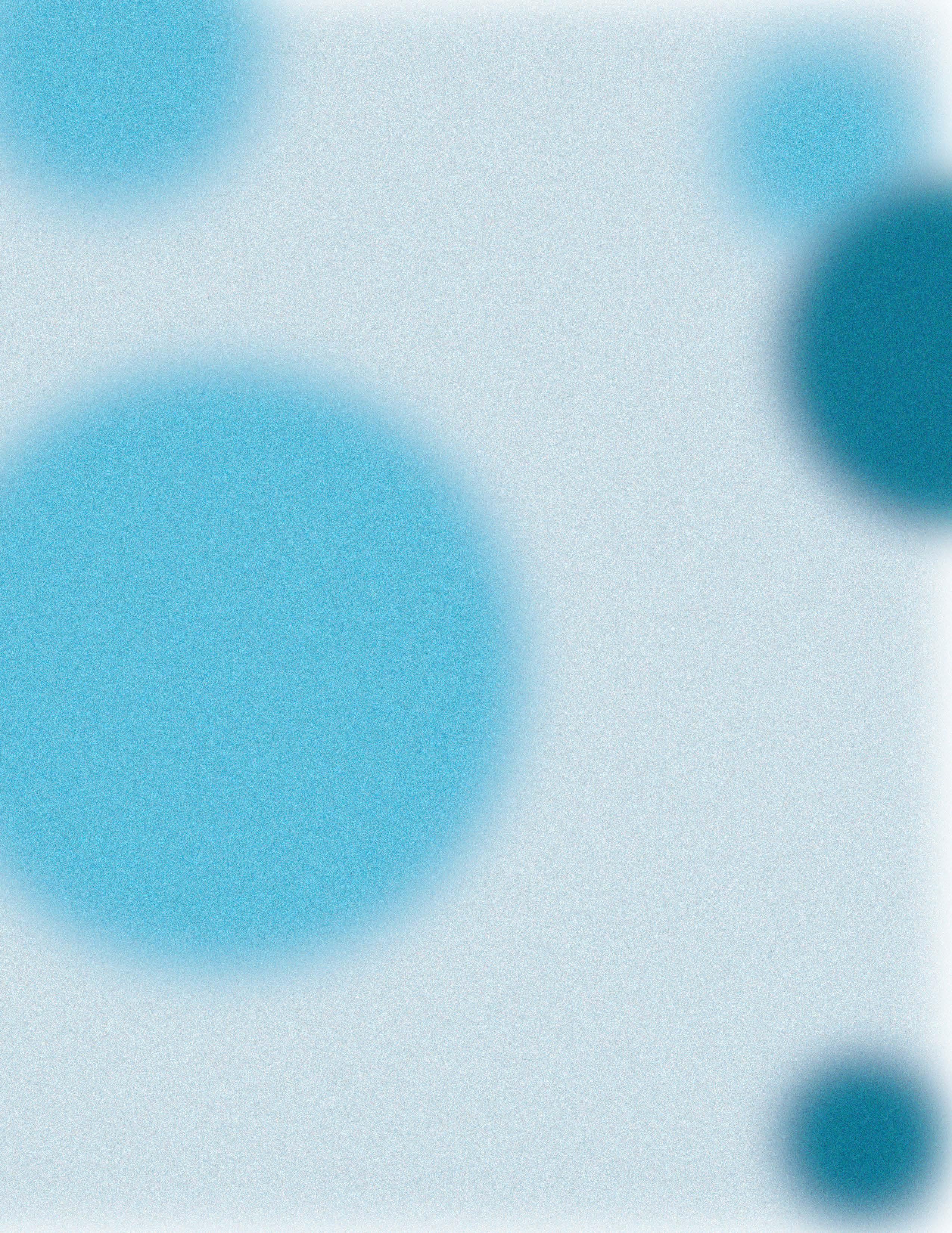
MA: I’ve been thinking about lately that writing doesn’t need to be a representation of your architecture…it’s also another medium. It’s a trip wire to be like, “everything I write needs to be related to the architecture that I’m making.” My favorite architectural writing is more about disciplinary or cultural observations. Where they’re trying to understand what the world is…at an extremely large scale. And then, those observations are disciplinary conversations which will again seep into projects in small ways or big ways down the road.
QH: And I think, the best architecture is a reflection of how people are living lives in a very intimate way. And, I think writing is a really wonderful way to begin that investigation at a very simple, and foundational, and fundamental level, how are people interacting with each other, how to built environments reflect that? And I think writing is like-, it’s a very useful tool to be able to get from that place to actually creating form. That observation.
MA: Are you writing a lot in school?
QH: Of course! It seems like it’s half design, half writing, if not more. And, I think it’s super useful to get those juices flowing.
MA: You like it?
QH: I love it. I think because you’re always writing with someone. You’re writing in response to someone, especially in architecture.
MA: I think that’s it’s good and important. I’ve been writing again. It’ll probably take a long time, but I’ve been doing it.
